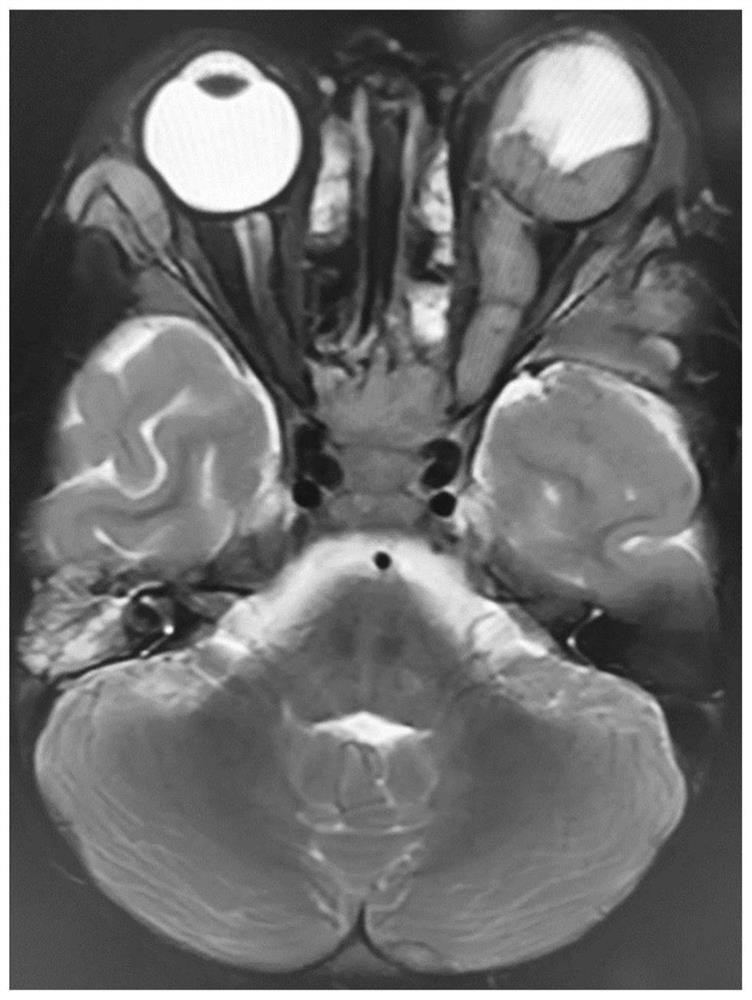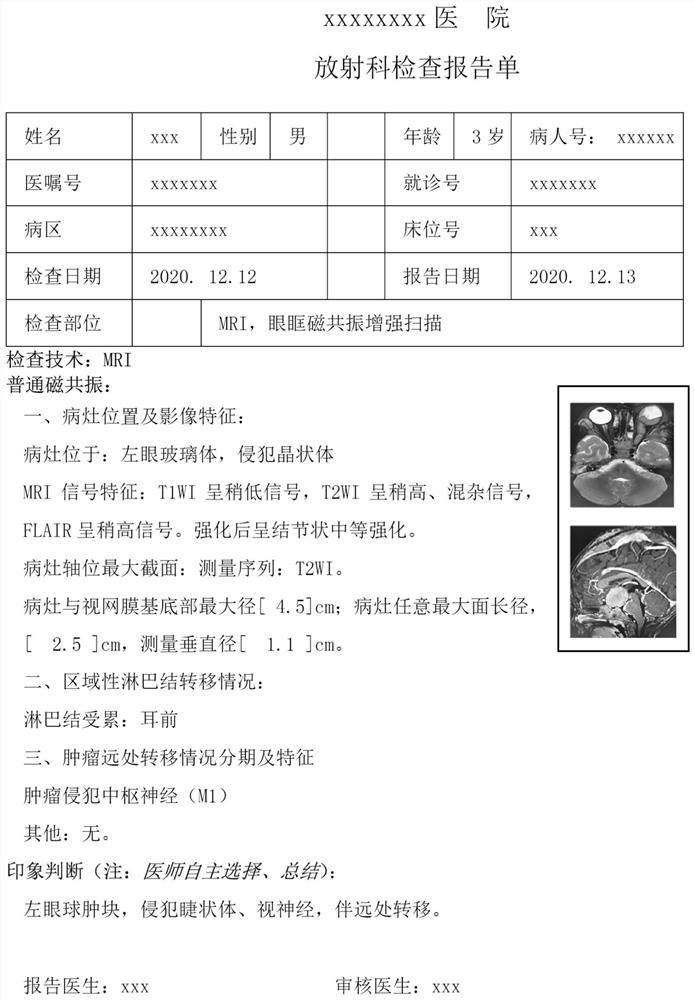Intravitreal tumor image result output system and method
A technology of tumor imaging and output methods, applied in neural learning methods, medical images, healthcare informatics, etc., can solve problems that affect clinicians' preoperative staging, complex and diverse tumor imaging performance, and affect curative effect
- Summary
- Abstract
- Description
- Claims
- Application Information
AI Technical Summary
Problems solved by technology
Method used
Image
Examples
Embodiment 1
[0062] Basic structural model diagram of the orbit, including 6 extraocular muscles and intraocular anatomy. The extraocular muscles are skeletal muscles, and there are 4 rectus muscles and 2 oblique muscles that move the eyeball. The rectus muscle includes superior rectus, inferior rectus, medial rectus and lateral rectus, which together form the common tendon ring around the white optic canal, run forward along the wall of the eyeball, and insert at the upper, lower, medial, and upper parts of the sclera, respectively. Lateral; the obliques include the superior and inferior obliques. Intraocular structures include the anterior chamber, lens, ciliary body, macular optic disc, optic nerve, optic nerve head, and vitreous body.
[0063] In the first step, the imaging doctor judges the tumor site on the DICOM map, and clicks the site on the anatomical pattern map on the computer. The anatomical site can be the specific site of the tumor in the frame, such as the vitreous body, m...
PUM
 Login to View More
Login to View More Abstract
Description
Claims
Application Information
 Login to View More
Login to View More - R&D
- Intellectual Property
- Life Sciences
- Materials
- Tech Scout
- Unparalleled Data Quality
- Higher Quality Content
- 60% Fewer Hallucinations
Browse by: Latest US Patents, China's latest patents, Technical Efficacy Thesaurus, Application Domain, Technology Topic, Popular Technical Reports.
© 2025 PatSnap. All rights reserved.Legal|Privacy policy|Modern Slavery Act Transparency Statement|Sitemap|About US| Contact US: help@patsnap.com



